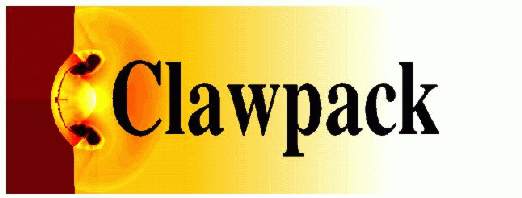|
flag2refine.f.html |
 |
|
Source file: flag2refine.f
|
|
Directory: /home/rjl/git/rjleveque/clawpack-4.x/amrclaw/2d/lib
|
|
Converted: Sun May 15 2011 at 19:16:14
using clawcode2html
|
|
This documentation file will
not reflect any later changes in the source file.
|
c
c -------------------------------------------------------------------
subroutine flag2refine(mx,my,mbc,meqn,maux,xlower,ylower,dx,dy,t,
& level,tolsp,q,aux,amrflags,DONTFLAG,DOFLAG)
c -------------------------------------------------------------------
c
c ::::::::::::::::::::: flag2refine ::::::::::::::::::::::::::::::::::
c
c User routine to control flagging of points for refinement.
c
c Default version computes spatial difference dq in each direction and
c for each component of q and flags any point where this is greater than
c the tolerance tolsp. This is consistent with what the routine errsp did in
c earlier versions of amrclaw (4.2 and before).
c
c This routine can be copied to an application directory and modified to
c implement some other desired refinement criterion.
c
c The logical function allowflag(x,y,t,level) is called to check whether
c further refinement at this level is allowed at this particular location
c and time. The default library version of this routine returns .true.
c for all arguments. Copy that routine to the application directory and
c modify it if needed to restrict the region where refinement is allowed.
c
c Points may also be flagged for refining based on a Richardson estimate
c of the error, obtained by comparing solutions on the current grid and a
c coarsened grid. Points are flagged if the estimated error is larger than
c the parameter tol in amr2ez.data, provided tol>0. If tol<=0 then
c the coarsening and Richardson estimation is not performed!
c This is a change from previous versions (4.2 and before) of amrclaw.
c Note: in previous versions, the routine errf1 used a function
c allowed(x,y,level) that has been replaced by the allowflag. This new
c function is also used in Richardson estimation if that is invoked.
c
c
c q = grid values including ghost cells (bndry vals at specified
c time have already been set, so can use ghost cell values too)
c
c aux = aux array on this grid patch
c
c amrflags = array to be flagged with either the value
c DONTFLAG (no refinement needed) or
c DOFLAG (refinement desired)
c
c tolsp = tolerance specified by user in input file amr2ez.data, used in default
c version of this routine as a tolerance for spatial differences.
c ::::::::::::::::::::::::::::::::::::::::::::::::::::::::::::::
c
implicit double precision (a-h, o-z)
dimension q(1-mbc:mx+mbc,1-mbc:my+mbc,meqn)
dimension aux(1-mbc:mx+mbc,1-mbc:my+mbc,maux)
dimension amrflags(1-mbc:mx+mbc,1-mbc:my+mbc)
logical allowflag
external allowflag
c # loop over interior points on this grid:
do 20 j = 1,my
y = ylower + (j-0.5d0)*dy
do 10 i = 1,mx
x = xlower + (i-0.5d0)*dx
amrflags(i,j) = DONTFLAG
if (allowflag(x,y,t,level)) then
c # check to see if we should flag this point for refinement.
c # Here the default test is taken from errsp.f in previous
c # versions of amrclaw -- flag this point if dq > tolsp:
dq = 0.d0
do 5 m = 1,meqn
dqi = dabs(q(i+1,j,m) - q(i-1,j,m))
dqj = dabs(q(i,j+1,m) - q(i,j-1,m))
dq = dmax1(dq,dqi, dqj)
5 continue
if (dq .gt. tolsp) amrflags(i,j) = DOFLAG
endif
10 continue
20 continue
return
end

